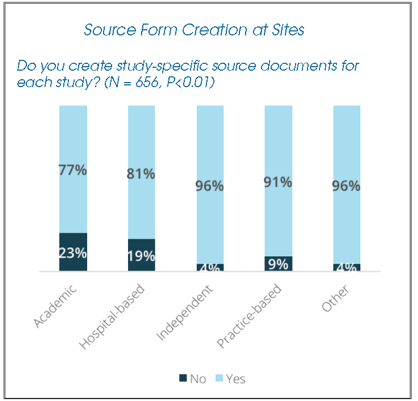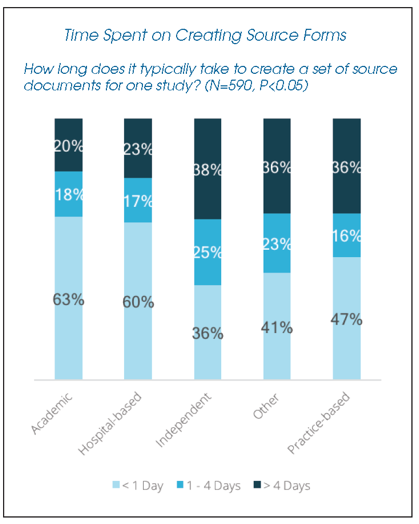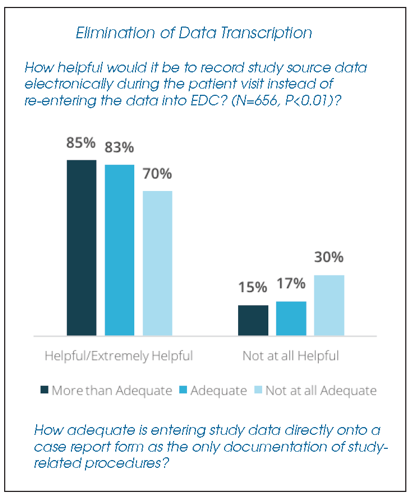Sites Elaborate on The Burden of Using Paper Source Forms
Tanya Bridges and Donna Benson, from two non-affiliated study sites, discuss the burdens of using paper source forms, and their impact on resources and trial execution at study sites.
In a previous interview, we demonstrated the pain points of using paper source forms, and how the use of eSource improves clinical trial data quality. In this interview, Tanya Bridges and Donna Benson, from two non-affiliated study sites, will delve deeper into the burdens of using paper source forms, and their impact on resources and trial execution at study sites. SCRS in collaboration with CenterWatch and Clinical Ink recently released a free whitepaper that quantifies the financial impact of these burdens at sites.
Moe Alsumidaie: Can you describe the process and site burden of creating paper source forms?

Tanya Bridges: We typically use templates when creating source forms, but the process is definitely time consuming. Each individual sponsor will have different requirements within their protocol, so we create source documents for each study. My personal experience with creating source is that it's definitely very time consuming; it takes at least two days of our time per study. This year we are starting up a lot of unique studies, which means that we have to uniquely customize individual source documents, and when you add up the time it takes to create source forms for all studies, the resource spend comes up to a lot. Creating source forms is definitely burdensome for my site, and because protocols are often lacking CRF guidelines this typically adds more time to the source form creation process. Usually, if we are working with one sponsor, they will have similar requirements across studies so we can reuse some of the questions from those sources. However, most of the time, we have to recreate source forms from the ground up for every new study. A big change in the industry is eSource. This will be a huge resource savior because we won’t have to create unique paper source forms for every study, and eSource can have embedded instructions to help with data collection.

MA: What are the problems associated with using paper source forms?
TB: A big issue we run into is the burden associated with updating the paper source forms when there is an update to the eCRF. We oftentimes miss the required data points, and use the older version of the paper source forms before we have a chance to update them to the new eCRF, which leads to new data collection omissions. There are also the resources spent validating the paper source forms after the updates are made.
Another issue with using paper source is the data transcription process into EDC; it is not efficient and the transcription process introduces errors. eSource in the form of a tablet allows us to capture everything electronically, all at once, eliminating the need to transcribe later.
MA: Can you elaborate on the burdens of transcribing data into EDC?
Donna Benson: Transcribing paper source data into EDC is another resource exhaustive process, as it takes about an hour for every patient study visit. There can be disconnects with the information on paper source forms versus what the eCRF is asking for, which then always causes a lot of auto queries and data quality problems. For example, on the paper source there could be missing data or information that has been recorded incorrectly, or just typos created during the data transcription process, especially if the staff gets distracted. My coordinators spend extra time double and triple checking the source forms and eCRF because we want to try to capture the data on the spot instead of chasing the patient for more information afterwards.

I am looking forward to when we move over to paperless trials and eSource; the coordinators will be able to input data directly in tablets. Not only will this save us time by not having to transcribe data into EDC, but it will also dramatically reduce data error. Having auto queries show up on the spot, when you’re with the patient, and ensuring we collect all required data elements will be very helpful. The process will be streamlined with eSource, so there won't be those additional steps and data quality issues, but as for now, we have to face those problems.
MA: As a site, what more would you do if you didn’t have to go through the challenges of using paper source forms and transcribing data into EDC?
TB: We could spend more time seeing patients and we could do way better on our financials. We could also focus on other activities-such as patient retention and recruitment. We would spend less time cleaning data and we would be able to start and close the study faster.
MA: Who should be launching eSource initiatives, the site or the sponsor?
DB: As far as I know, no one is taking leadership in this area, so for now I am driving it myself for my own site and am paying for it. It would be wonderful if eSource was planned and incorporated way upstream, at the sponsor level. There are a number of procedures, such as rating scales that are being conducted on tablets. It would make the most sense to build it into the study rather than starting at the end of the rope and pushing back to get everybody on board. Sponsors should pay for eSource, incorporate it in the studies and roll it across all sites. Sponsors could save a significant amount of time and resources, especially with monitoring, data cleanup, and finishing their studies faster.
MA: Are sponsors resisting the use of eSource?
This is a traditional industry and is very conservative. Regulatory agencies are very supportive of new eSource technologies, and are trying to get the industry to adopt it, but in my experience, it takes time for the industry to change. It would be wonderful if we could create a small team of industry stakeholders to push eSource efforts and adoption.
Improving Relationships and Diversifying the Site Selection Process
April 17th 2025In this episode of the Applied Clinical Trials Podcast, Liz Beatty, co-founder and chief strategy officer, Inato, discusses a number of topics around site engagement including community-based sites, the role of technology in improving site/sponsor relationships, how increased operational costs are impacting the industry, and more.
SCOPE Summit 2025: Enhancing the Patient Experience Through Site Centricity
February 12th 2025In an interview with ACT senior editor Andy Studna at SCOPE Summit, Ashley Davidson, vice president, product lead - sponsor tech strategy, Advarra, highlights the need for more site-centric approaches in study startup.